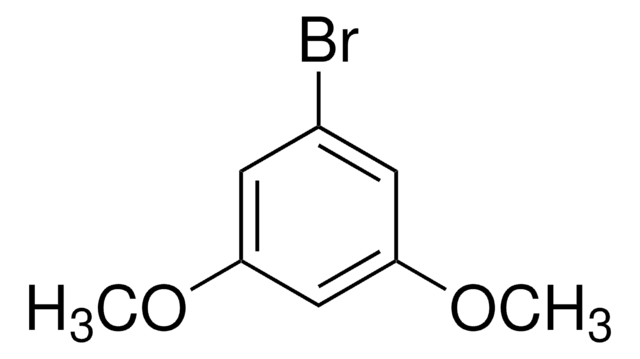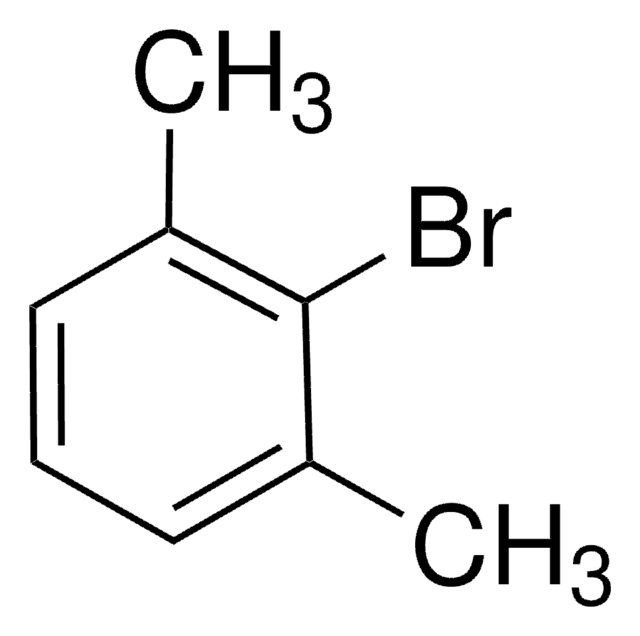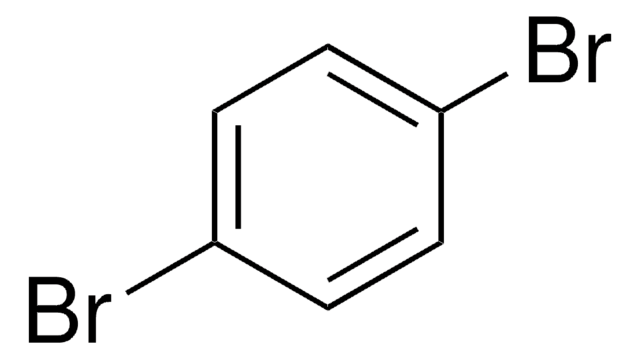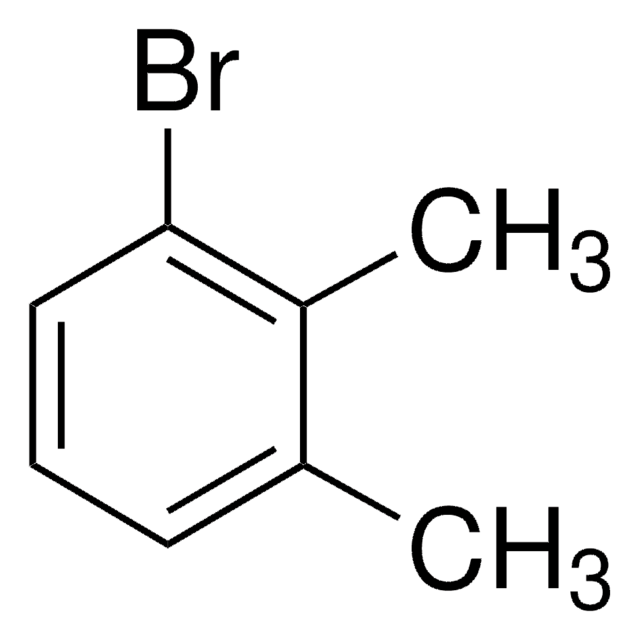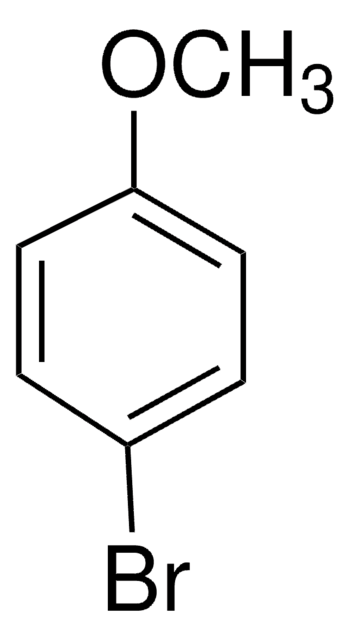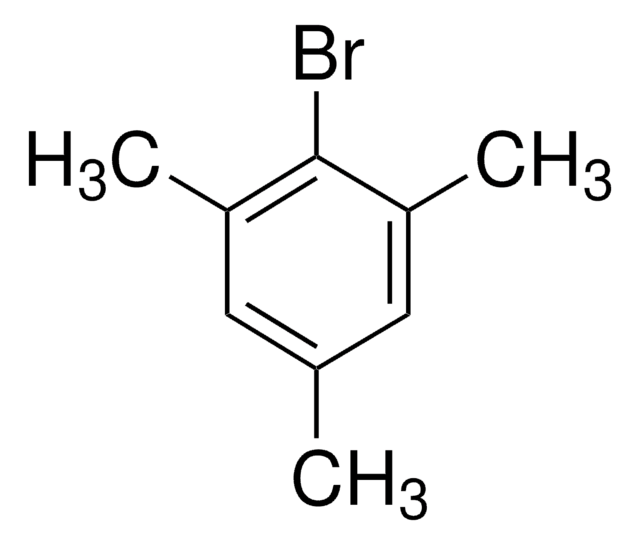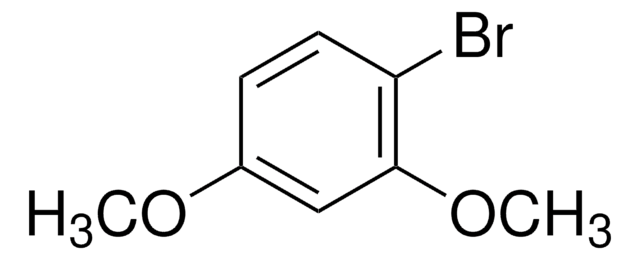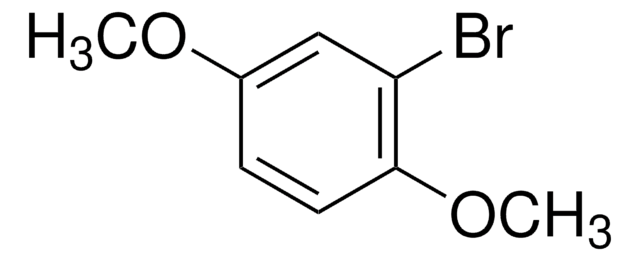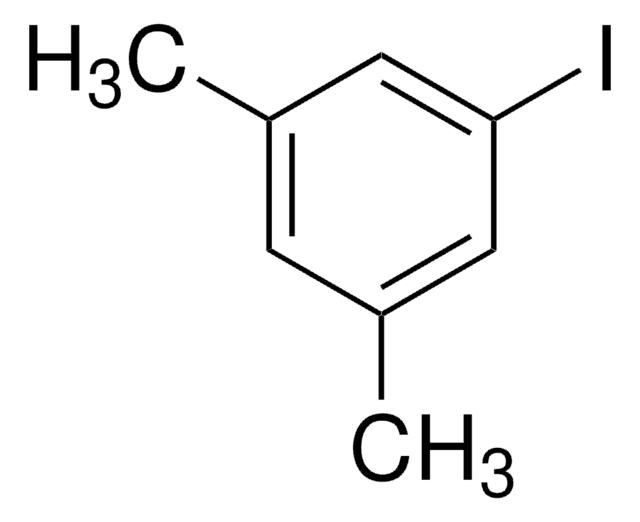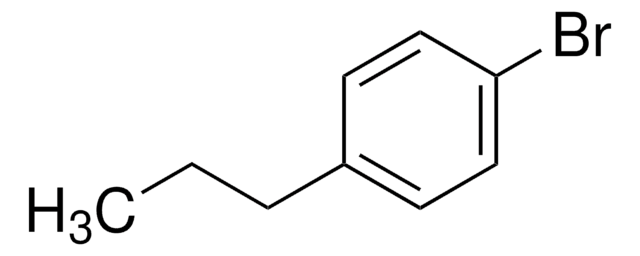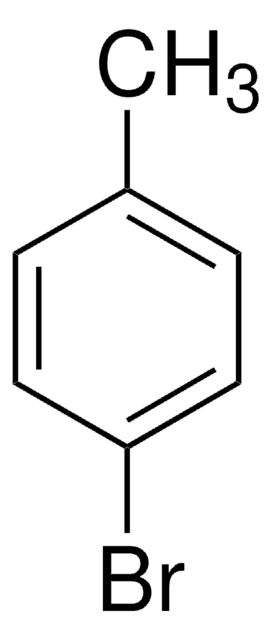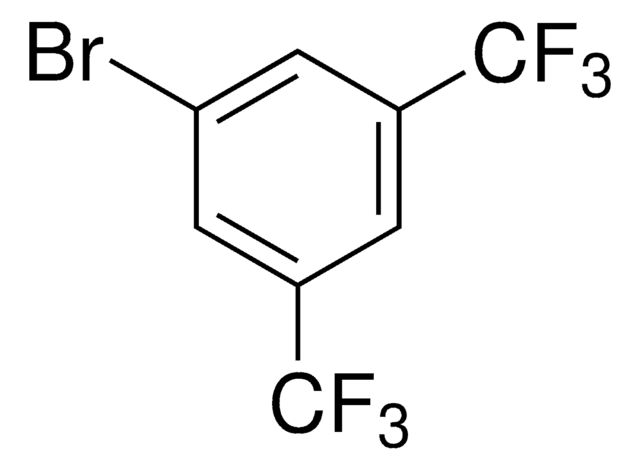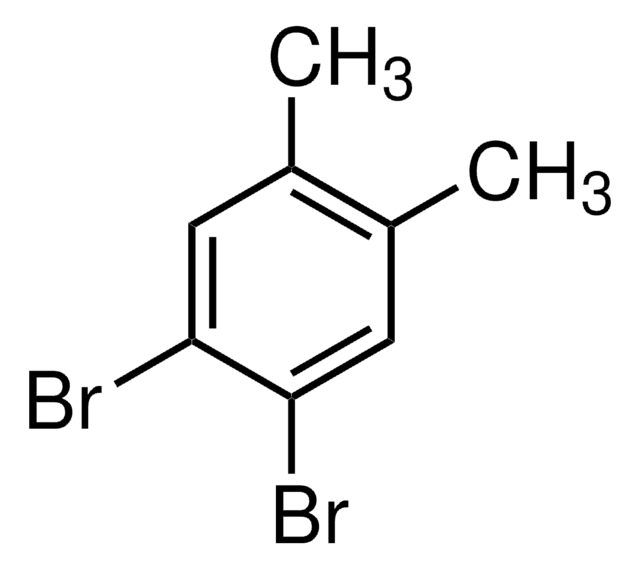276316
1-Bromo-3,5-dimethylbenzene
97%
Sinonimo/i:
5-Bromo-m-xylene
Autenticatiper visualizzare i prezzi riservati alla tua organizzazione & contrattuali
About This Item
Formula condensata:
(CH3)2C6H3Br
Numero CAS:
Peso molecolare:
185.06
Numero MDL:
Codice UNSPSC:
12352100
ID PubChem:
NACRES:
NA.22
Prodotti consigliati
Livello qualitativo
Saggio
97%
Stato
liquid
Indice di rifrazione
n20/D 1.549 (lit.)
P. ebollizione
202-204 °C (lit.)
Densità
1.362 g/mL at 25 °C (lit.)
Gruppo funzionale
bromo
Stringa SMILE
Cc1cc(C)cc(Br)c1
InChI
1S/C8H9Br/c1-6-3-7(2)5-8(9)4-6/h3-5H,1-2H3
LMFRTSBQRLSJHC-UHFFFAOYSA-N
Categorie correlate
Descrizione generale
Palladium catalyzed carbon-oxygen coupling of 1-bromo-3,5-dimethylbenzene and o-cresol to potassium hydroxide to produce o-tolyl-3,5-xylyl ether has been reported.
Applicazioni
1-Bromo-3,5-dimethylbenzene has been used in the synthesis of substituted 2,2′-bis(diphenylphosphanylmethyl)-1,1′-binaphthyl derivatives.
Avvertenze
Warning
Indicazioni di pericolo
Consigli di prudenza
Classi di pericolo
Eye Irrit. 2 - Skin Irrit. 2
Codice della classe di stoccaggio
10 - Combustible liquids
Classe di pericolosità dell'acqua (WGK)
WGK 3
Punto d’infiammabilità (°F)
188.6 °F - closed cup
Punto d’infiammabilità (°C)
87 °C - closed cup
Dispositivi di protezione individuale
Eyeshields, Gloves, type ABEK (EN14387) respirator filter
Scegli una delle versioni più recenti:
Possiedi già questo prodotto?
I documenti relativi ai prodotti acquistati recentemente sono disponibili nell’Archivio dei documenti.
I clienti hanno visto anche
Highly Selective Catalyst Systems for the Hydroformylation of Internal Olefins to Linear Aldehydes This work was supported by Oxeno Olefinchemie GmbH and the State of Mecklenburg-West Pommerania. Dr. C. Fischer and Mrs. S. Buchholz are thanked for their excellent technical support.
Holger Klein et al.
Angewandte Chemie (International ed. in English), 40(18), 3408-3411 (2001-10-10)
Vittoria M Blasucci et al.
The journal of physical chemistry. A, 114(11), 3932-3938 (2010-03-20)
Tunable solvent systems couple homogeneous catalytic reactions to heterogeneous separations, thereby combining multiple unit operations into a single step and subsequently reducing waste generation and improving process economics. In addition, tunable solvents can require less energy than traditional separations, such
Tapan K Pal et al.
Chemistry (Weinheim an der Bergstrasse, Germany), 21(52), 19064-19070 (2015-11-21)
By using a bent tetracarboxylic acid ligand that incorporates a pendent-NH2 functional group, a 3D Zn(II)-framework (1) based on Zn2 (CO2)4 secondary building units and Zn12 (CO2)24 supramolecular building blocks has been synthesized. Framework 1 is thermally less stable, which
Global Trade Item Number
| SKU | GTIN |
|---|---|
| 276316-100G | 4061838348395 |
| 276316-25G | 4061837587207 |
| 276316-5G |
Il team dei nostri ricercatori vanta grande esperienza in tutte le aree della ricerca quali Life Science, scienza dei materiali, sintesi chimica, cromatografia, discipline analitiche, ecc..
Contatta l'Assistenza Tecnica.